The Creation and Evolution of ETX 90
The ETX-90 was initially developed to rival the Questar, a highly esteemed premium 90mm Maksutov-Cassegrain telescope that remains priced at around $5,000 USD to this day, unchanged with inflation. Since its introduction in 1958, the Questar has maintained its original design.
Companies like Celestron, Criterion/Bausch & Lomb, and even Meade themselves made several unsuccessful attempts to develop a telescope comparable to the Questar during the 1970s and 1980s. However, Meade’s original ETX-90, released in 1996, distinguished itself from these previous efforts in two primary aspects:
- It employed Maksutov-Cassegrain optics with specifications identical to those of the Questar.
- It utilized more cost-effective materials, such as plastic, to reduce both expense and weight.
The ETX-90 has gone through a number of iterations since then. While the ETX-90’s optics, fundamental design, and accessories have remained relatively consistent throughout its lifespan, other features have evolved.
It was in production from 1996 until 2021, when the previous version, the ETX-90 Observer, was discontinued due to both the COVID-19 pandemic and Orion’s acquisition of Meade following Orion’s lawsuit against Meade.
In 2023, Orion, Meade’s new owner, resurrected the ETX-90 and ETX-125, seemingly using old tooling from the mid-2000s that they got when they acquired Meade Instruments in 2021. These “new” ETX models are branded as the ETX-AT series, like some of the original GoTo ETX telescopes, and lack the “Observer” line’s mechanical upgrades while also using optics and components made in Mexico.
The “new” 2023 ETX-90 AT is the one I’m reviewing here.
The Optical Tube & Performance
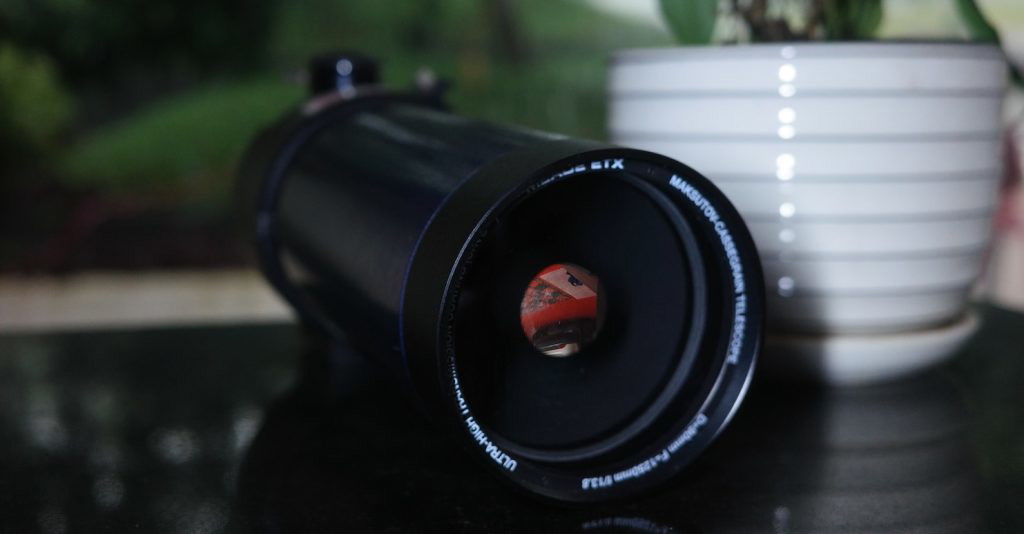
It’s disappointing for me to see that the “new” ETX-90 AT offered by Orion in many ways backtracks from the “Observer” model previously sold, lacking its ability to be detached from the fork mount or the Observer’s jumbo focus knob. It is still a 90mm (3.5”) Maksutov-Cassegrain with a f/13.8 focal ratio and 1250mm focal length, however.
The North American-made ETX-90s tend to have a little better optical performance than the previous owner’s (Jinghua Optics & Electronics Co.) “Observer” and “Portable Observer” models, and the 2023 ETX-90 AT is no different. The optics feature “UHTC” multicoatings for slightly better light transmission.
The ETX-90 has a built-in flip mirror mechanism, which is basically a built-in star diagonal that flips out of the way for a rear port to attach a DSLR camera for imaging or a correct image prism for daytime terrestrial viewing. I think the flip mirror is basically a cheap gimmick, and I found that if it doesn’t line up exactly with the optical axis of the telescope, it makes the views less-than-sharp.
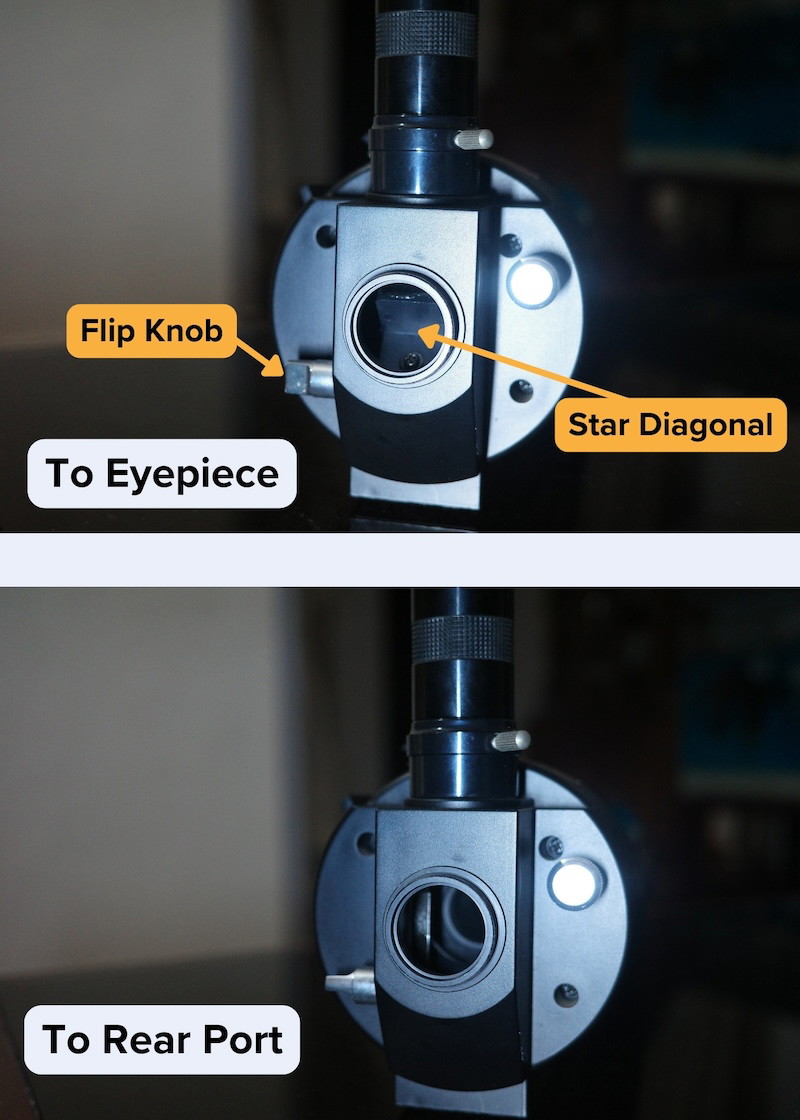
Good For Planets, Not Deep-Sky
With a 90mm aperture and super-long focal length, make no mistake—this is a lunar, planetary, and double star scope.
ETX-90’s small 90mm aperture (leading to less light gathering and resolution) and long 1250mm focal length (leading to a narrow field of view) significantly impair its ability to observe faint deep-sky objects like large open star clusters and nebulae that usually span a fairly wide field of view. ETX-90’s 1250mm focal length, when coupled with 1.25″-only eyepiece compatibility, restricts the maximum achievable field of view to just 1.25 degrees, or about 2.5 times the angular diameter of the full Moon.
A similarly small 90mm refractor or a 90mm reflector with short focal lengths and/or 2″ eyepiece compatibility (i.e., those with a 2″ focuser rather than a 1.25″ focuser) can provide a fairly wide field of view compared to that of the ETX-90.
At the same time, ETX-90’s extremely “slow” f/13.8 focal ratio offers several benefits.
This includes easy focusing due to the extensive depth of field, sharp star images even when using inexpensive eyepieces, and the ability to achieve high magnifications without extremely short focal length eyepieces or Barlow lenses.
A 90mm telescope with near-perfect optics like the ETX-90 can support up to around 180x magnification (by using a 7mm focal length eyepiece) before hitting the resolving power limit. However, I typically find the best planetary views at slightly lower powers, around 100x (achievable by using a 12mm focal length eyepiece).
Accessories
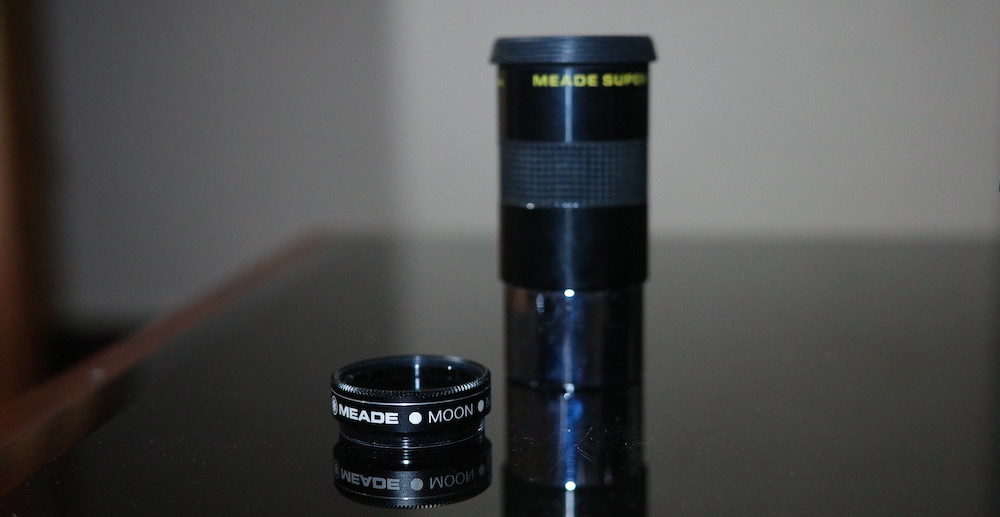
The Single 26mm Eyepiece
The ETX-90 has consistently been accompanied through the years by a 26mm “Super Plossl” 1.25″ eyepiece, and with the 2023 AT version, this is the only ocular supplied.
With a 52-degree apparent field of view, this eyepiece provides decent eye relief for glasses-wearers and yields 48x magnification with the ETX-90, resulting in a true field of view just over 1 degree, or roughly twice the angular diameter of the full Moon.
While I can confirm that the 26mm Super Plossl delivers sharp views up to the field’s edge, its 52-degree field of view didn’t feel particularly immersive to me, and 48x is not enough for optimal planetary views.
At the price the ETX-90 AT presently commands, I find it really inexcusable that another eyepiece or two wasn’t thrown in.
The Red Dot Finder
For a finder, the ETX-90 AT includes a standard red dot finder attached to the scope with a non-standard bracket, meaning it’s effectively the only option. However, for the purposes of aiming at bright targets or aligning the GoTo system, I agree that it works fine.
The Smartphone Adapter & Moon Filter
A smartphone adapter and “moon filter” are also included with the ETX-90 AT.
The simple adapter clamps onto the provided 26mm Plossl and similar eyepieces, allowing for basic lunar photography, though I’ve got to say that it’s hardly sturdy or high-quality.
I consider the “moon filter” as a cheap piece of tinted glass that does little but blur or dim the view. It is hardly necessary anyway.
Mount
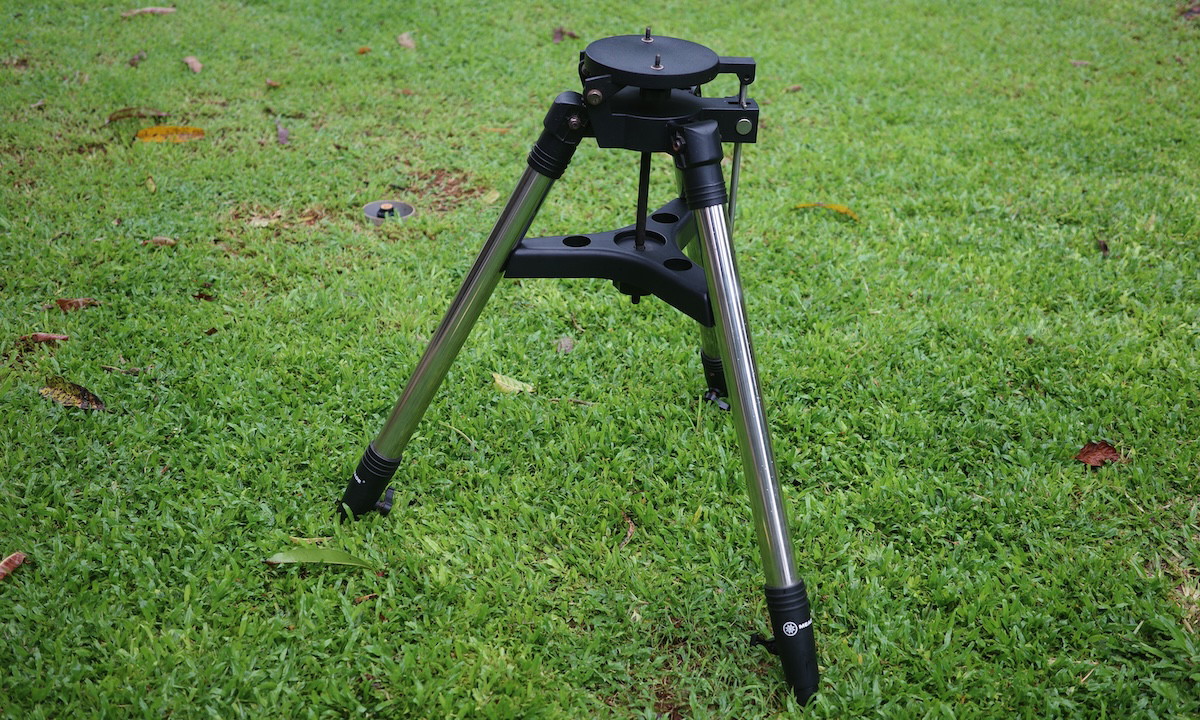
The scope is attached to Meade’s #884 tripod, a sturdy steel tripod with a built-in “wedge” to convert the scope to an equatorial configuration. But between its lack of fine adjustments and the ETX optical tube and mount being completely unsuitable for deep-sky imaging, I don’t see much of a point in using the wedge.
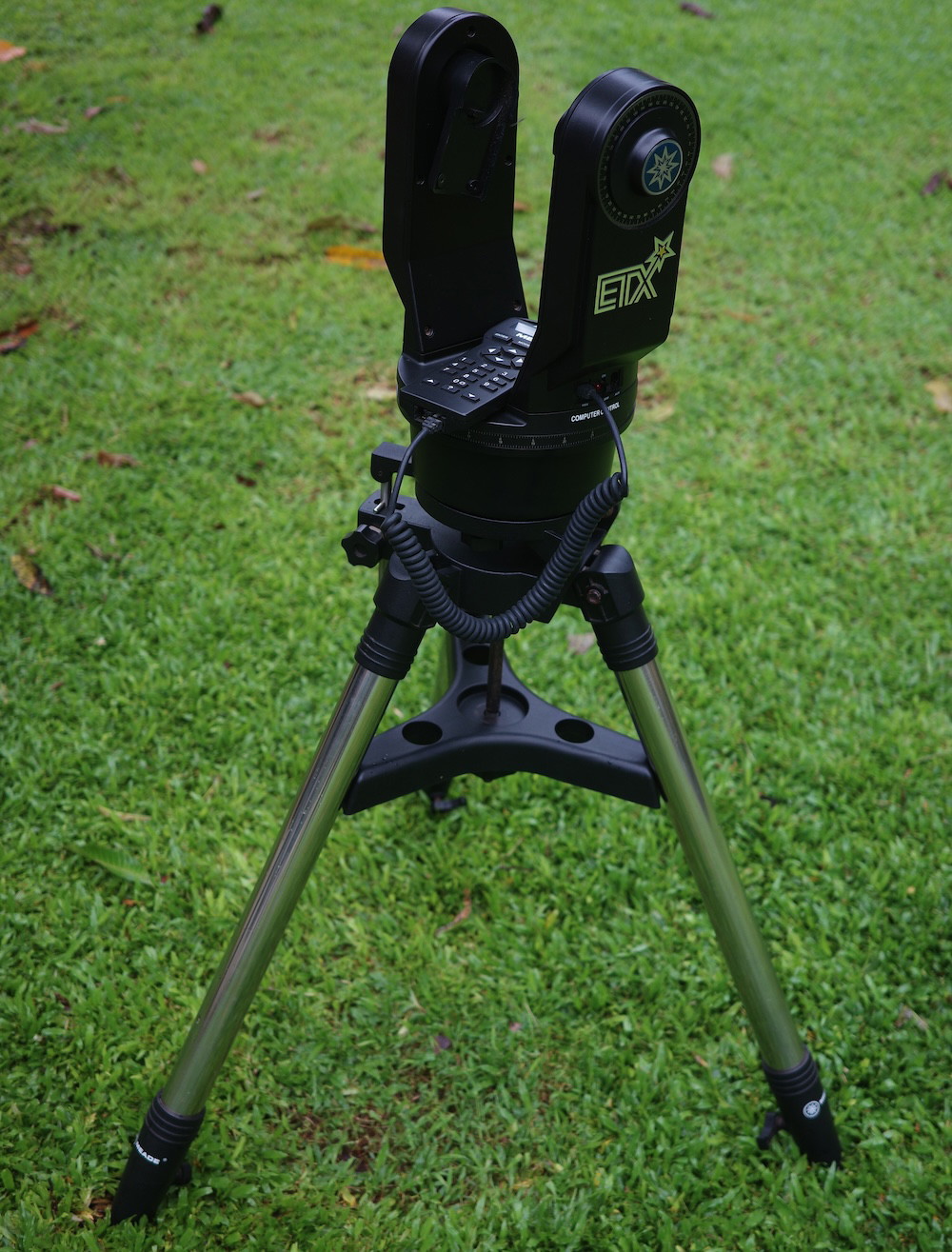
The mount runs off Meade’s AudioStar system. I see the AudioStar as a primitive GoTo hand controller similar to the Meade’s own AutoStar, apart from an additional feature that allows it to speak to you, which you will probably never actually end up wanting to use. I also find it rather unnecessary on the whole, as the ETX-90 is pretty limited in what targets it can show me due to its small aperture and long focal length.
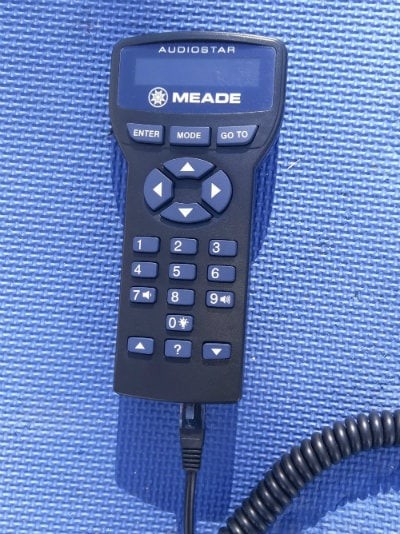
ETX-90’s mount also consumes a lot of power. Inserting 8 AA batteries gives me one or two nights of observing before the scope drains them. Some sort of reusable/rechargeable battery or power supply is required for the ETX in the long run, unless you can run it exclusively off AC power.
The ETX-90 AT does feature clutches on the mount, which theoretically allow for manual aiming. But in practice, this is useless, as I couldn’t make any fine adjustments. Aiming manually also ruins the alignment and accuracy of all GoTo and tracking functions.
Should I buy a Used Meade ETX-90 AT?
Older Meade ETX-90 models will offer you the same features at a lower price tag and in a more compact form factor, if you must have one.
As with any used catadioptric, make sure that the corrector is in one piece (it is essentially irreplaceable) and that the focus moves smoothly, as well as checking that the mirror coatings are in good shape.
Maksutov’s secondary “spot” is essentially impossible to recoat, so damage to it is irreversible.
If possible, you should also test the mount’s drives and AutoStar/AudioStar systems to make sure it run smoothly.
Alternative Recommendations
Due to its tiny aperture and limited field of view, the Meade ETX-90 AT is simply not capable of revealing details in galaxies, resolving globular star clusters or planetary nebulae, or providing immersive views of larger emission nebulae, even under ideal conditions. This telescope is designed primarily for observing the Moon, planets, and double stars.
For anything beyond casual and low-quality deep-sky views, it’s best to consider other options, and there are better Maksutovs available at prices well below the ETX-90’s sky-high price tag.
I’ve picked an assortment of alternative picks for Maksutov-Cassegrains as well as an assortment of larger reflecting telescopes, almost all of which are computerized in some fashion.
Maksutov-Cassegrains
- The Celestron Astro Fi 102 boasts a slightly larger aperture than the ETX-90 while maintaining the sleek Maksutov-Cassegrain optical design and utilizing the stable and user-friendly AstroFi mount and tripod. However, much like the ETX-90, its limited aperture and ultra-long focal length, combined with the 1.25″ eyepiece compatibility, restrict its field of view, further limiting deep-sky observations.
- The Sky-Watcher Virtuoso 90 has the same optical performance as the ETX-90 AT, with a motorized tracking mount and a quality accessory bundle including a solar filter provided. It is a tabletop scope, but can be attached to a suitable sturdy tripod too, and it costs a fraction as much as the ETX.
- The Explore Scientific FirstLight 100mm Mak EQ3 has a slightly larger aperture than the ETX-90, and a simple manual equatorial mount. It’s not perfect, but it is a bit more capable, cheaper, and works well.
- The SarBlue Mak70 is smaller than the ETX-90 and all-manual in aiming, but puts up surprisingly good views of bright targets and comes well-equipped with its included accessory bundle.
Reflectors
- The Apertura AD8/Zhumell Z8/Orion SkyLine 8 offers over double the aperture—thus a bit over twice the resolution and 5x the light gathering ability—of the ETX-90 AT, along with a pile of useful accessories and features mounted atop a sturdy and simple Dobsonian mount.
- The Celestron StarSense Explorer 8″ Dobsonian offers computerized pointing assistance through its StarSense Explorer technology connected to your smartphone, as well as a more lightweight and transportable base compared to the AD8/Z8. Although it doesn’t physically adjust the telescope for you, it displays instructions on your smartphone screen via the StarSense Explorer app and adapter. However, it includes few accessories, and collimation of the 8″ model can be cumbersome.
- The Sky-Watcher Virtuoso GTi 150P’s substantially larger aperture than the ETX-90 more than triples light gathering capabilities and nearly doubles resolution. It also features a collapsible tube for easy portability, a pair of high-quality eyepieces, a wide field of view due to its 750mm focal length, and a straightforward tabletop Dobsonian mount. To fully utilize its potential, however, you will need a stable surface or a suitable tripod. In exchange, you’ll enjoy a more expansive field of view than the ETX-90 and the convenience of smartphone or tablet control. Sky-Watcher also offers the Heritage 150P, a completely manual version of the Virtuoso GTi 150P.
- The Sky-Watcher Virtuoso GTi 130P is a marginally smaller variant of the GTi 150P. However, considering the minor differences in dimensions, weight, and cost, we recommend the 150P due to the increased capabilities its extra inch of aperture offers. The 130P is also available in a manual-only format at a lower price, known as the Sky-Watcher Heritage 130P.
- The Celestron Astro Fi 130 features a computerized GoTo mount controlled through your smartphone or tablet and has robust tripod legs. Its 130mm f/5 optics provide views similar to the Sky-Watcher 130P scopes, with the addition of a 2″ focuser, surpassing the ETX-90 in terms of resolving power, achievable field of view, and light gathering capabilities.
Aftermarket Accessory Recommendations
A 32mm Plossl eyepiece will give you a bit lower magnification (39x) and a wider field of view than the ETX-90’s stock 26mm, and it’s the main additional eyepiece I’d recommend for this scope at the low power end.
For medium and high magnifications suitable for lunar, planetary, and double star viewing with the ETX-90 AT, I recommend a 15mm (83x) goldline or redline eyepiece and a 9mm (139x) goldline/redline as well. Alternatively, eyepieces such as the Agena Starguider or Explore Scientific 62 and 82-degree series oculars work well with the ETX-90, though they are quite a bit more expensive.
A dew shield will help to keep stray light out of the ETX-90 as well as prevent condensation from forming on the corrector plate and reducing glare, and a small rechargeable power supply, such as one from TalentCell, will allow you to forget about running out of AA batteries as well as save you money in the long term if you use the scope frequently.
What can you see with ETX 90?
The ETX-90 excels at observing the Moon and planets, enabling me to see the phases of Mercury and Venus, lunar surface details just a few miles/kilometers in size, Mars’ polar ice caps, Jupiter’s Galilean moons and cloud belts, Saturn’s rings and its brightest moon Titan, as well as Uranus and Neptune as small blue dots.
With some effort, I could also glimpse a couple of dark spots on Mars that represent shifting sand patches, Jupiter’s Great Red Spot, and the shadows of Galilean moons during their transit across the planet.
Additionally, the ETX-90 resolve Saturn’s cloud belts, the Cassini division within its rings, and several more of its moons, such as Rhea.
The ETX-90’s sharp optics, free from chromatic aberration and diffraction spikes, also make it excellent for splitting double stars, with thousands of vibrant binary stars accessible via the GoTo functionality available with the ETX.
However, the ETX-90 falls short when it comes to detailed views of deep-sky objects like galaxies or globular clusters.
- At best, I’m able to discern Andromeda or M82 with some difficulty, even under ideal conditions and with a trained eye. Observing galaxies in light-polluted environments can be especially challenging due to the ETX-90’s small aperture.
- Open star clusters are also less impressive because of the telescope’s limited field of view.
- While the Orion Nebula is a treat, other nebulae tend to be underwhelming, with the largest ones failing to fit within the field of view and planetary nebulae appearing dim and unresolved if you can manage to see them at all.
- Globular star clusters need at least a 5″ instrument to resolve individual stars, leaving them as faint fuzzy dots with the ETX-90.
For more satisfying and detailed views of most deep-sky objects, I recommend a 4-6″ tabletop Dobsonian or a larger 8″, 10″, or 12″ instrument.
Astrophotography Capabilities
The ETX-90 AT has a relatively small aperture to be useful for planetary imaging; however, satisfactory lunar and planetary images can still be captured using this telescope and a high-speed CMOS planetary camera like the ZWO ASI224MC.
Employing a 2x Barlow lens to increase the scope’s image scale to approximately f/28 and a 2500mm focal length is ideal for capturing detailed images of Mars, Jupiter, Saturn, and the Moon’s finer features.
Nonetheless, deep-sky astrophotography remains unattainable with the ETX-90 AT due to the mechanical constraints of the telescope and its mount, as well as its ultra-long focal ratio.

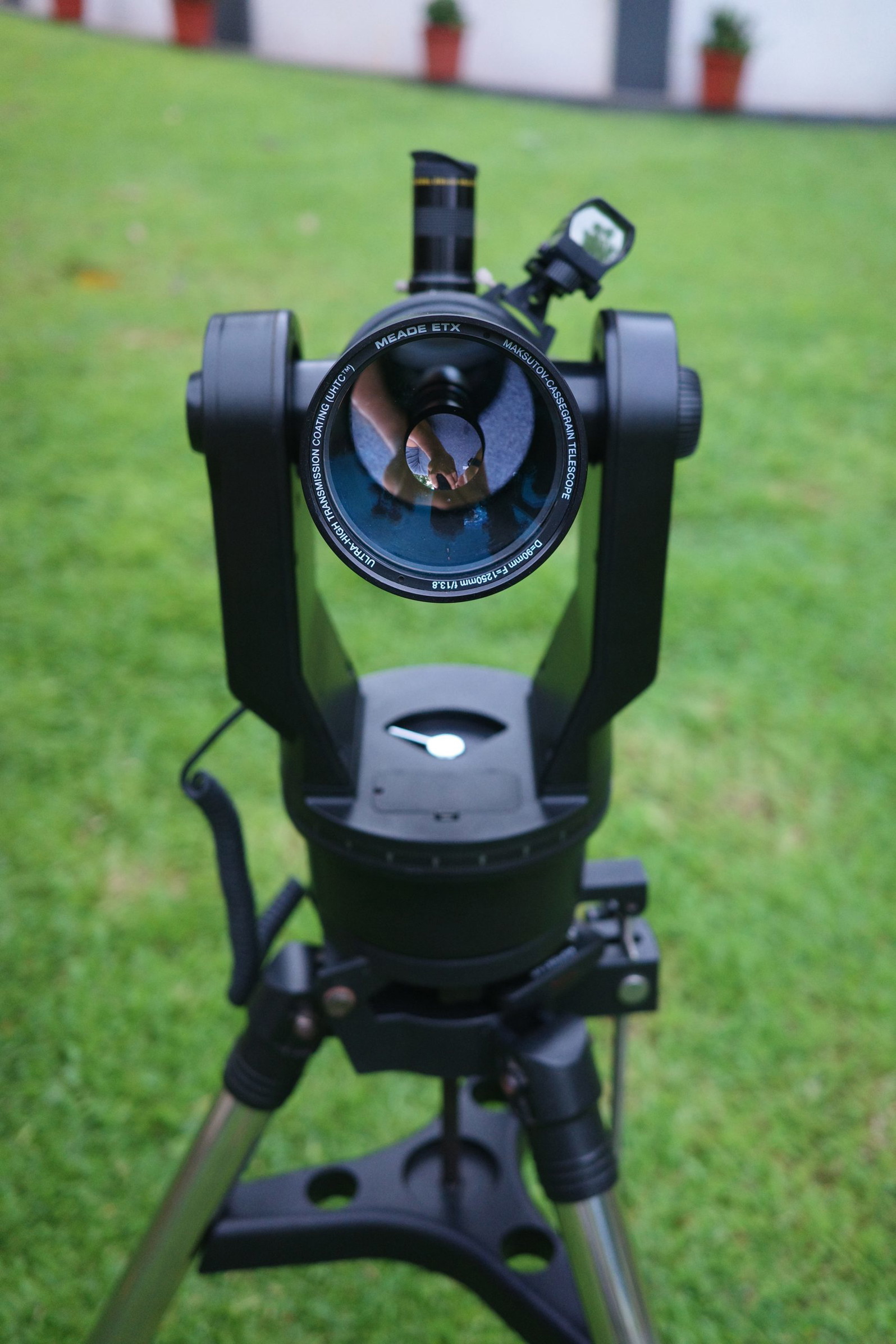
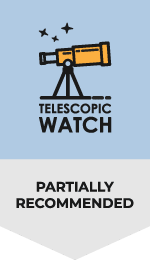

Thanks for the advise. Since 1998 I own a Meade LX200 UHTC and I love it. I always wanted an ETX90 and after 20 years from my first meade I was willing to buy the ETX for travel, but not anymore after reading your review. It seems that Meade is no longer a Hi-end manufacturer for the ETX Series, it is a shame that I did not buy my ETX back then. Now I will have to look for another option elsewhere. Can someone please give me options for a travel telescope? Thanks.
https://telescopicwatch.com/best-portable-travel-telescopes/
I’m glad I read your review as this telescope seems well suited to a novice like myself. As someone not wishing to fail to find anything to see due to lack of magnification and also drawn to the possibility of taking pictures eventually, this seemed perfect.
However, whilst the alternative recommendations are good for buying new, there are loads of 2nd hand scopes out there. ideally this means getting more scope for less money.
Do you have any recommendations for a secondhand option in this performance bracket?
Or is it just to get hold of the original ETX90?
I would recommend getting an 8″ or 6″ Dob.
Actually great info. Yes the 8 inch Dob is what I would suggest, see alot more especially deep sky and planet details. Now using a 10 inch dob.
My use of the ETX90 abit different. My first use of a goto telescope, making finding things quick indeed. Note need ability to know star selections as use least to for setup and guide.
No you won’t see detail in the fainter dim deep sky but dark site and patience as had 2 year fun and couldn’t put it down. Lots to pick on with this one but found its optics reasonable for its aperture. Yes are other better selections, but I recall my first Martian look at its polar cap stunning as the planet slowly gained size each month for view.
Check Cloudynights forum, patient people on the beginner forum. Excellent!